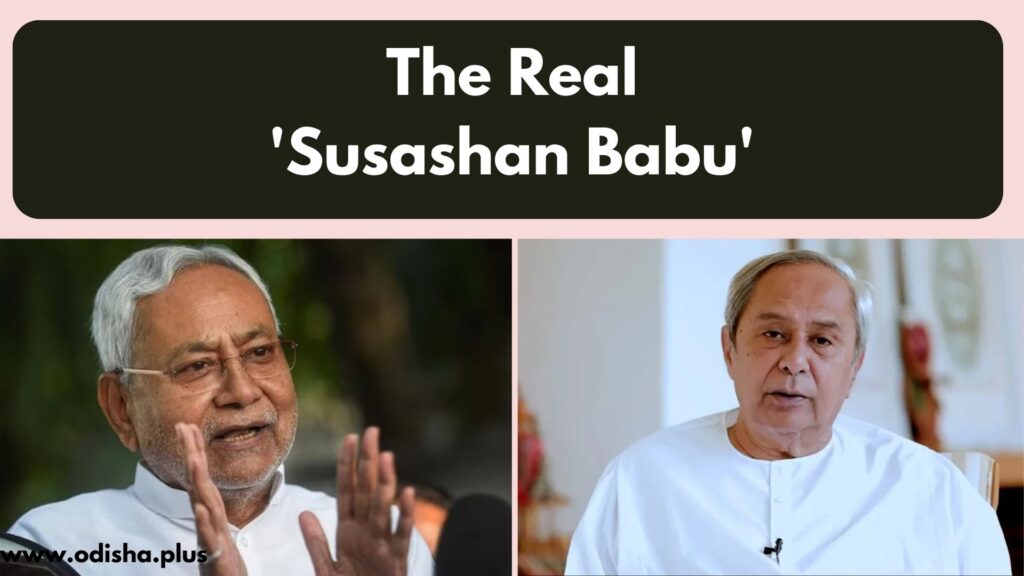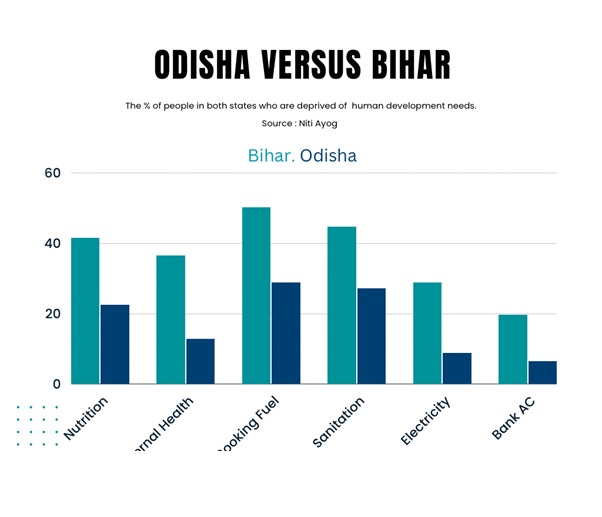Sutanu Guru
Both were colleagues in the Union Cabinet when Atal Bihari Vajpayee became Prime Minister of India under an NDA government. Nitish Kumar was the Railways minister while Naveen Patnaik was the Steel Minister. Nitish Kumar was the product of the struggle against Indira Gandhi and the Emergency, spending year after year at the grassroots level of “socialist” and Mandal politics.

In contrast, Naveen Patnaik was a kind of “princeling”, the privileged child of the legendary Biju Patnaik who suddenly jumped into politics in 1997 having spent decades hobnobbing with artists, writers and Hollywood cum rock star celebrities. A majority were skeptical when Naveen Patnaik, who could not speak Odia, became chief minister in 2000. Many were hopeful when Nitish Kumar became chief minister of Bihar in 2005. Both are still chief ministers of their states. Nitish Kumar often displays barely concealed prime ministerial ambitions and gets a lot of space in “Delhi media”. Naveen Patnaik remains confined to Odisha.

Yet, the journey of Odisha and Bihar in the 21st century conclusively proves that it is Naveen Patnaik and not Nitish Kumar who is the real “Susashan Babu”. Odisha was a basket case in 2000 when Patnaik became chief minister in March 2000. Large parts had been destroyed by a Super Cyclone. Bihar too was a basket case when Nitish Kumar became chief minister in 2005.
One decade of unbridled corruption under a decade of Congress rule in the 1980s followed by 15 years of “jungle raj” under Lalu Prasad Yadav had brought the state to its knees. Both promised change and a better life for their citizens. Who has delivered when it comes to promises? Data clearly reveals that it is Naveen Patnaik who has transformed Odisha even as Nitish Kumar hogs the limelight for whatever reasons.
Let us look at some hard data to understand the yawning gap between the performances of Nitish Kumar and Naveen Patnaik. Both Bihar and Odisha were the poorest states in India at the turn of this century with more than 50% of the population below the poverty line. The per capita income of Odisha was just about 30% of the per capita income of India when Patnaik became CM. It was the same case in Bihar when Nitish became CM.
What about today? The per capita income of Odisha is almost three times that of Bihar and is now close to 90% of the per capita income of India. Bihar continues to languish despite many high growth years; with per capita income just about one third of India. There is a near unanimity among economists and analysts that the per capita income of Odisha will soon surpass that of India. Look at another set of data that is even more startling. The population of Bihar is about 125 million while that of Odisha is about 47.5 million. Yet, GST collections in Bihar in December 2022 were Rs 1309 crores while it was Rs 3854 crores in Odisha.
There is more. The Niti Ayog published a comprehensive multi-dimensional poverty report that covered every state of India at the end of 2021. About a dozen human development indicators were selected to measure the multi-dimensional poverty ratio. It was 25.01% for India, 29.35% for Odisha and a shocking 51.91% for Bihar. The chart below reveals how far behind Odisha has left Bihar in this century.

By any yardstick, the condition of Bihar and its citizens remains pathetic even as Odisha has taken giant strides in human development. Imagine: more than half of Bihar doesn’t have access to clean cooking fuel while one in four citizens in Odisha suffer. About one in three in Bihar don’t have access to electricity while less than one in ten in Odisha suffer the same fate.
Limited space does not allow the author to present a more detailed analysis of data that would establish beyond doubt that Naveen Patnaik has done a far better job in delivering on promises than Nitish Kumar. The gap is widening year after year and by end of this decade, Odisha will be a middle-income state by Indian standards while Bihar remains a replica of sub-Saharan Africa.
There are three possible reasons for this. The first is personal popularity. There is no doubt Nitish Kumar was immensely popular in 2010 when he led the NDA to a landslide repeat victory in assembly elections. But numerous surveys by C Voter and other agencies show he is no longer popular while Patnaik remains so. This has made Nitish Kumar perpetually dependent on “allies”.
That brings us to the second factor: stability. There were fears in 2008 about political stability in Odisha when Naveen Patnaik dumped the BJP as an ally. But he has won three bigger mandates since then and has the room to implement policies of his choice. The third is focus. While Nitish Kumar has often flirted with national politics even as the CM, Naveen Patnaik has focused only on Odisha.
These facts cannot be denied even by critics of Naveen Patnaik.
(Author has been a media professional for over 3 decades. He is now Executive Director, C Voter Foundation. Views are Personal)






















